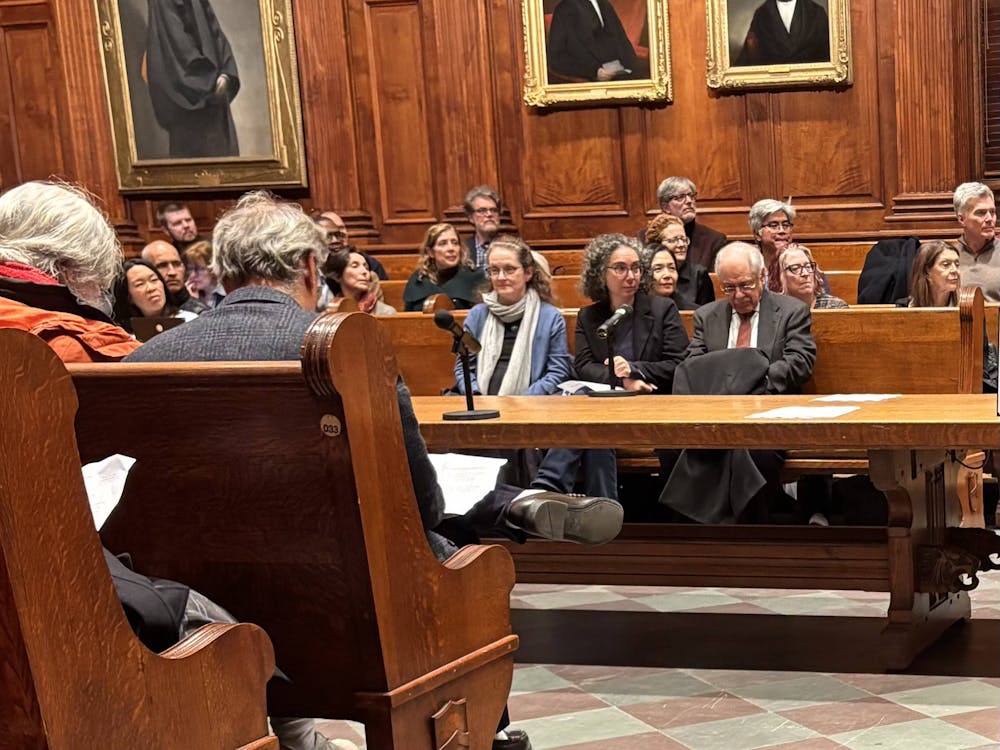For the past 12 months, Princeton Borough and Princeton Township have been attempting to combine two governments into one, a process that, though complicated and occasionally contentious, has provided a local case study to a group of Wilson School graduate students studying municipal governance.
The group of students that has been tracking the process of consolidation between the Borough and Township is now finalizing its report, which documents the consolidation process and makes recommendations for how it can be improved. The group will present the report to a joint meeting of the Transition Task Force and the Consolidation Commission on Dec. 19.
The group consists of four graduate students and one undergraduate student. Its faculty adviser, Wilson School lecturer Heather Howard, currently sits on the Borough Council and was elected to serve on the consolidated municipal council.
Anton Lahnston, chair of the Consolidation Commission — which recommended last year that the two municipalities consolidate — had initially approached the Wilson School to ask that a group be formed to analyze the consolidation process because he saw it as an opportunity.
“There are a lot of issues that are emerging,” Lahnston said. “There are a lot of challenges at play here that we’re experiencing for the first time in Princeton and the first time in the state of New Jersey, and some people would say we were breaking new ground.”
Logan Clark GS, the leader of the group working on the report, explained that he and his colleagues have been following the process since early 2012, when the TTF began to make progress.
“We were following those events in real time,” he said. “We performed background documentation and other correspondence that was happening outside of the meetings. There was a survey done online to members of the task force.”
The Wilson School report also documents decisions of the TTF’s individual subcommittees, including the finance, public safety and infrastructure groups.
Clark said that, from his perspective as an academic studying the issue, the consolidation process has gone relatively smoothly. He said there was “very little controversy,” which “makes for a livable society and functioning government.”
Nevertheless, Clark acknowledged that some aspects of the process could have been performed with greater ease. For example, he noted that when the two municipalities began to organize the TTF, it was unclear which issues the TTF would address and what the task force was specifically charged with doing.
To address these issues, the report presents recommendations, which are divided into key themes. One theme addressed is the process that selected the members of the TTF, which Clark said needed to be made clearer from the outset.
“There’s a little bit of inefficiency, time loss, confusion that was created,” Clark said, referring to the time period in which the two municipalities began to organize the TTF.

Another theme evaluates how the TTF presented the cost-benefit analysis of consolidation. Throughout the process, some local residents voiced concerns that municipal services would be reduced after the merger. In trying to assuage these concerns, Clark suggested that the TTF may have overestimated the cost-savings. The report concludes the TTF should have been more straightforward about the potential savings from the beginning.
With these themes, the report contains “lessons learned that could be applied to municipalities across the state and even across the country,” Clark said.
Joseph Stefko, president and chief executive of the Center for Governmental Research, which is advising the consolidation, also said the Borough-Township merger could serve as a model for other towns considering such a change, especially in New Jersey.
“[The report] is intended to look at the overall process to provide key themes ... what worked well in the process and why,” he said. “I think the report’s going to be very valuable.”







